Homemade Queso fresco without vinegar or lemon, just the fresh and natural flavor of the milk. It is a traditional cheese in many Latin cuisines.
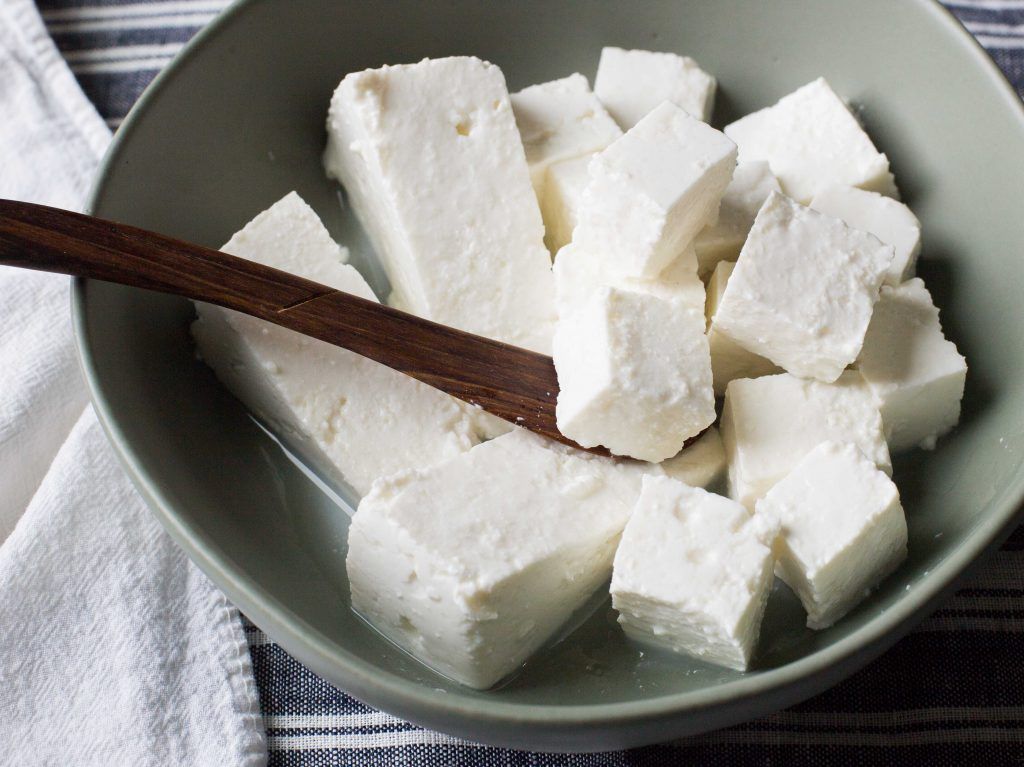 I can tell you without hesitation that Queso Fresco or Quesillo is what I miss most from Chile. Although I have tried many kinds of cheese here in the U.S., none are the same. And so, occasionally, I make it at home and enjoy it to the fullest.
I can tell you without hesitation that Queso Fresco or Quesillo is what I miss most from Chile. Although I have tried many kinds of cheese here in the U.S., none are the same. And so, occasionally, I make it at home and enjoy it to the fullest.
The recipe is a little long. If you have questions, leave a comment. The ingredients are as I find them in the U.S.A.
For true Chilean flavor, don't use lemon juice or similar; get rennet.
How to eat Queso Fresco?
Depending on the country, Queso fresco can be added crumbled on top of quesadillas or tacos in Mexico, used as filling for Arepas in Colombia or Venezuela, or in Chile added to a salad Causeo or a sandwich, or toast for breakfast or Once.
Queso Fresco is not a good cheese for melting or heating.
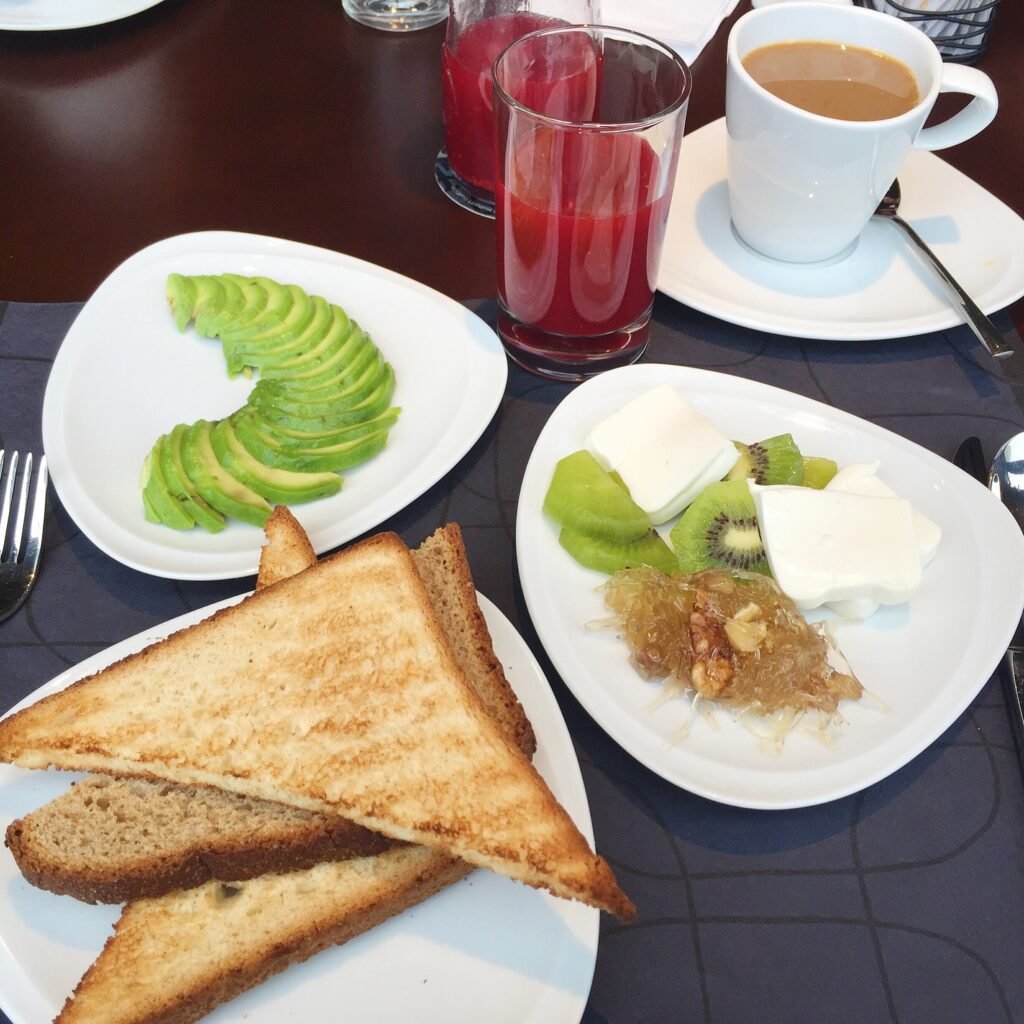
What cheeses are similar to Queso Fresco?
In many Latin stores, you will find several white kinds of cheese that look similar to Queso Fresco but have very different flavors and uses. Queso Fresco is made with milk, salt, and rennet. It doesn't have any other flavor added, and for someone who grows up eating it, it's very different from Queso Blanco, made with milk, salt, vinegar, or lemon juice.
Queso Panela is the most similar to Queso Fresco. It has a very clean flavor but is a little more dried. It is very good to cube and pan-fry. Queso Panela is a Mexican cheese.
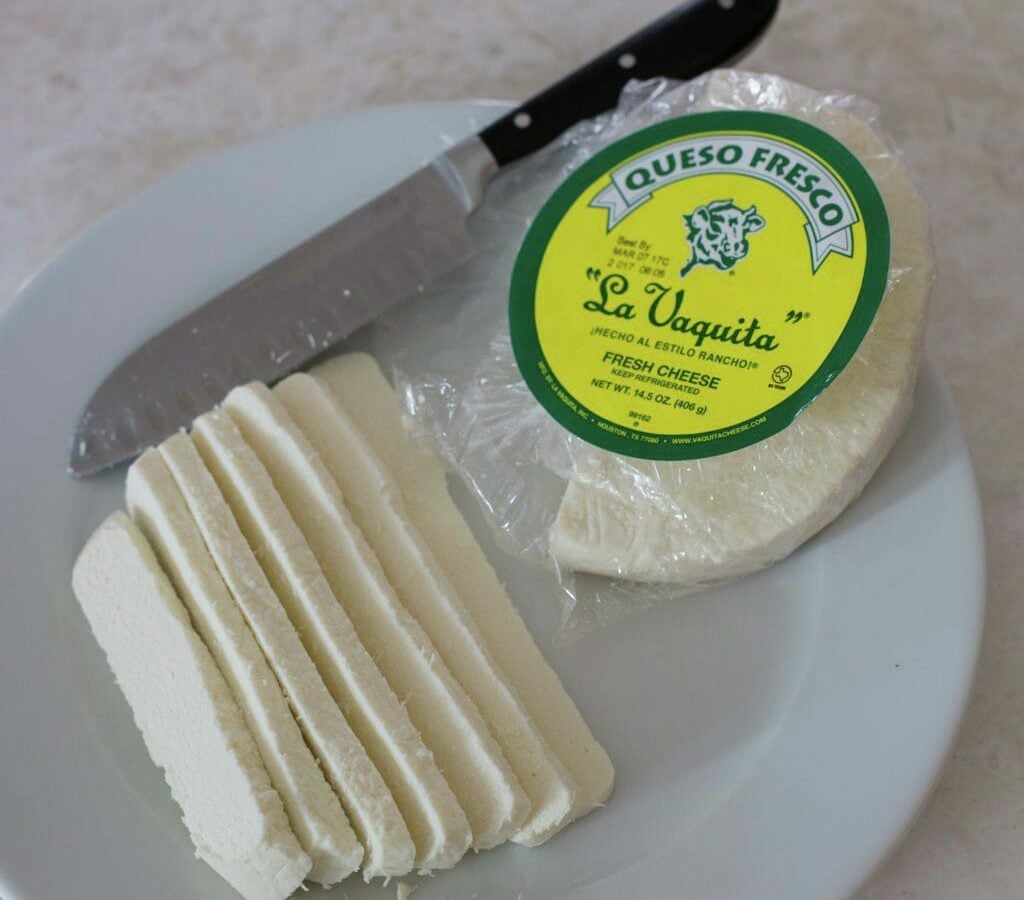
Another similar Mexican cheese is Cotija, which is much saltier and dried. Perfect for crumbling on tacos.
Farmer's cheese is similar to Queso Fresco in flavor; it is very mild and milky but has a very different consistency.
Brands that I like for Queso Fresco are Cacique, La Vaquita, and Los Altos.
Print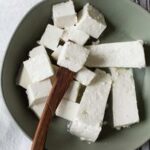
Homemade Queso Fresco
- Prep Time: 3 hours
- Cook Time: 10 minutes
- Total Time: 3 hours and 10 minutes
- Yield: 8" cheese
- Category: Cheese
- Method: Stove
- Cuisine: Chilean
Description
A mild fresh and delicious young cheese.
Ingredients
- 1 gallon of 2 % milk, not ultra-pasteurized
- 1 tablespoon of salt
- 1 tablet of Junket Rennet (affiliate link)
- Pot
- Strainer
- Soup spoon
- Table knife
- Cheesecloth (affiliate link)
- Thermometer
- Whisk or fork
- Cheese Mold (affiliate link)
- Tongs
Instructions
- Warm the milk in a large pot over medium-high heat until it reaches a temperature of 31-34 degrees C (91F). It is essential to have a thermometer to control the temperature of the process. It took 7 minutes in my kitchen, but it will depend on the flame and the pot you use. Turn off the heat.
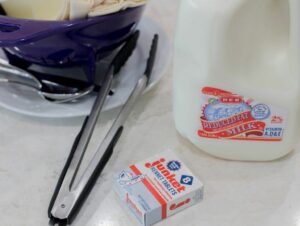
- Dissolve a tablet of rennet in 1 tablespoon of water. Add the rennet to the warm milk, and stir for 3 minutes. Let stand without stirring for 1 hour and a half until you can cleanly remove a piece of the surface with a knife and it is set. The time varies depending on the kitchen's temperature; it can take up to 2 hours and something in winter.
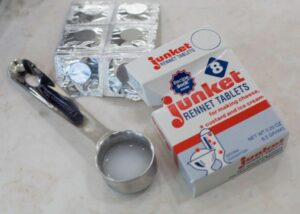
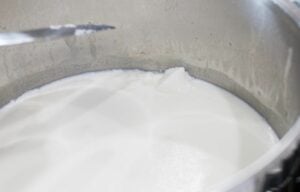
- Cut with a table knife from the top to the bottom of the pot in 2 x 2 cm. Let stand 15 minutes more in the pot, shaking gently every couple of minutes to "release" the serum.
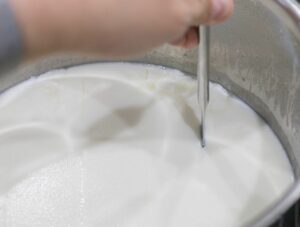
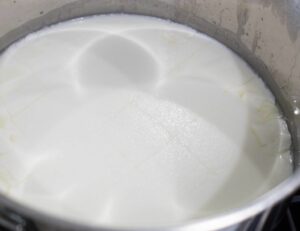
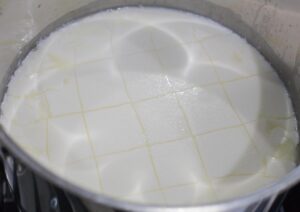
- Cover the colander with the cheesecloth. Strain the curd and let drain without stirring for 5 min, then lift with the cloth forming a ball to drain more liquid. Add the salt and stir gently.
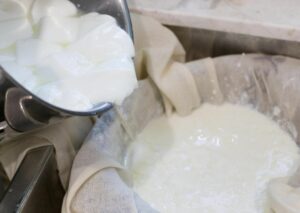
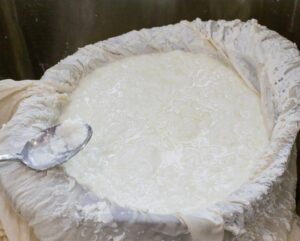
- Again make a ball with the cloth and squeeze gently. Notice that the cheese has already decreased a lot in volume. The process started with 3.8 Lt of milk, and I collected more than 2.5 Lt. of serum.
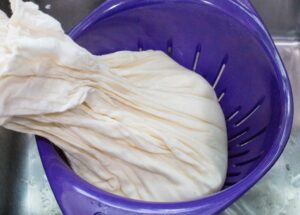
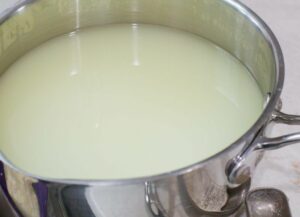
- Put the curdled milk in the plastic mold with holes that allow drainage, giving it a proper shape. Put some weight (can be a pair of cans). Let it rest in the refrigerator for at least 6 hours or overnight.
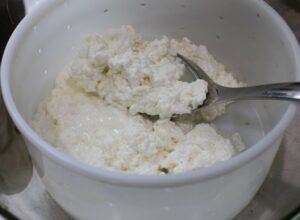
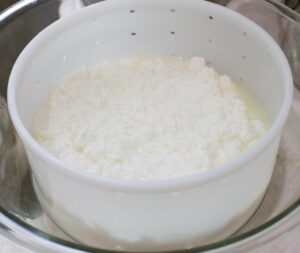
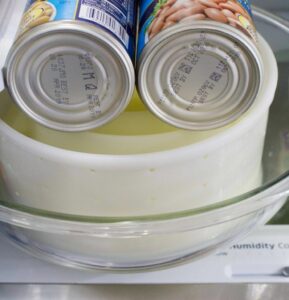
- The next day, remove from the mold and cut.
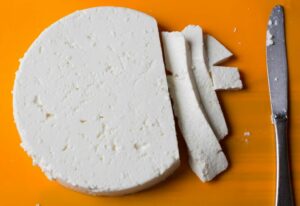
- Keep refrigerated. It is usual for the fresh cheese to release more serum. Keep draining it. It lasts only 4-6 days.
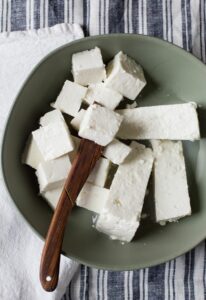
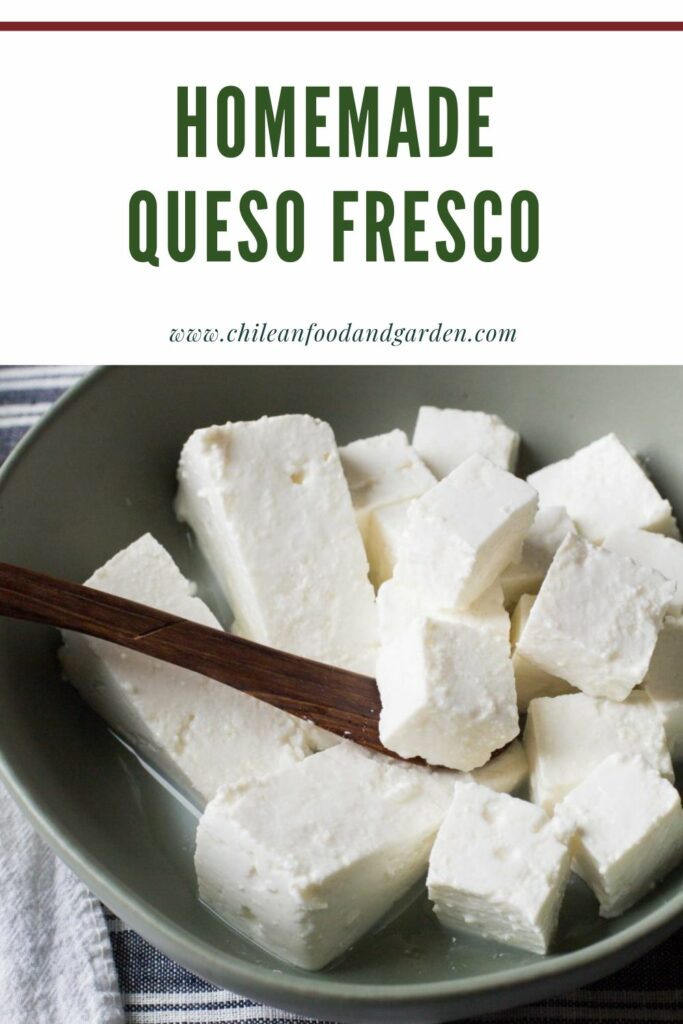

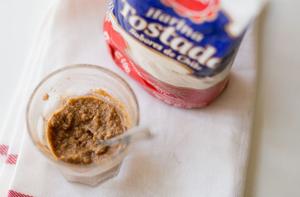
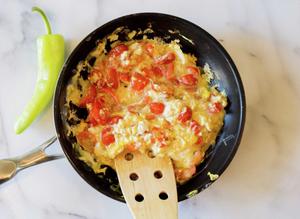
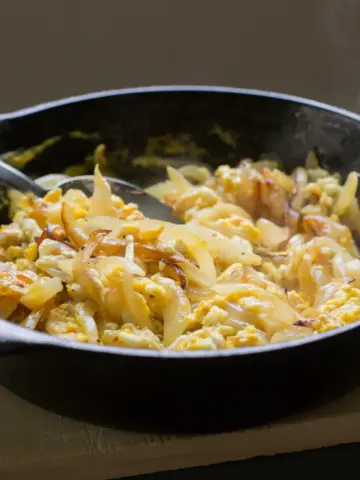
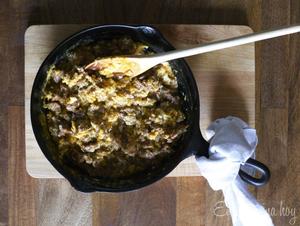
Andrea says
Only 92 degrees? All other recipes I’ve seen say at least 170. I’ve tried this 5 times now and it’s always a huge failure.
Pilar Hernandez says
Hello,
I think you are mixing temperature for pasteurization with temperature for activating the rennet enzymes. You can read more here https://pubs.nmsu.edu/_e/E216/
I suggest you check the rennet you are using, and also how are you maintaining the recommended temperature to sustain the enzymatic process.
Good luck.